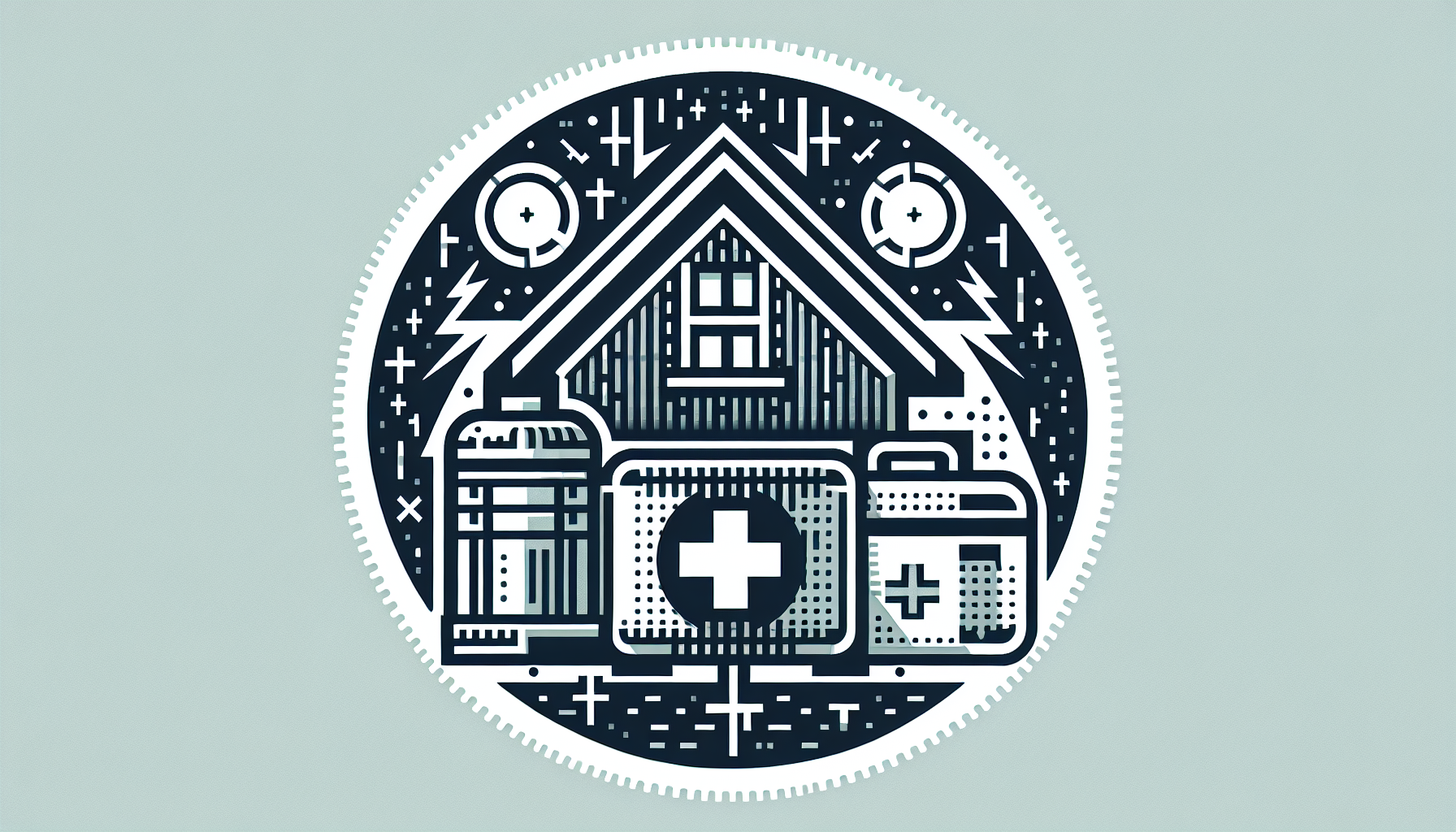In times of unexpected emergencies, it is crucial to have a plan on how to safely shelter in place. Whether it’s a natural disaster or a sudden security threat, knowing the right steps to take can make all the difference in ensuring your safety. This article will guide you through practical tips and procedures to successfully navigate a shelter-in-place situation, allowing you to have peace of mind during challenging times. From creating a designated safe area to stocking up on essential supplies, you will learn how to effectively protect yourself and your loved ones until the situation improves. So, let’s explore the key strategies that will help you confidently handle emergencies and stay safe while sheltering in place.
Preparing Your Home
When preparing your home for an emergency, there are several important steps you can take to ensure your safety and well-being. Creating an emergency supply kit is crucial, as it will provide you with essential items in case of a disaster. Be sure to include items such as non-perishable food, bottled water, flashlights, batteries, and a first aid kit. Additionally, securing and reinforcing your home is essential to minimize potential damage during an emergency. Consider reinforcing doors and windows, trimming trees and branches near your property, and securing heavy furniture and appliances. Finally, it is important to identify safe areas within your home where you can take shelter during an emergency. Choose rooms or areas that are structurally sound and away from windows or exterior walls.
Emergency Communication
Establishing a communication plan is an essential part of emergency preparedness. Designate a family member or close friend as your emergency contact, someone who can relay information and check on your well-being. Gather necessary contact information for all family members and ensure everyone is aware of how to reach each other in case of separation. It is also important to have alternative methods of communication, as cellphone networks may be overwhelmed or unavailable during an emergency. Consider using walkie-talkies or having a designated meeting point to communicate with your loved ones.

Monitoring Emergency Alerts
To stay informed about emergencies in your area, it is important to utilize local emergency notification systems. Register for any available alert systems that send messages directly to your phone or email. These systems provide updates on severe weather, natural disasters, and other emergencies. Additionally, keeping a battery-operated radio in your emergency supply kit is essential. In the event of power outages, a radio will allow you to receive important information and updates. Another valuable resource is subscribing to emergency alert services. Many government agencies and local organizations provide email or text alerts to keep you informed about any emergency situations in your area.
Preparing Essential Supplies
Stocking up on food and water is crucial when preparing for an emergency. Aim to have at least three days’ worth of non-perishable food items and one gallon of water per person per day. Choose items that do not require refrigeration or cooking, such as canned goods, protein bars, and dry snacks. Additionally, gather necessary medications and medical supplies for each family member. Keep a supply of prescription medications, over-the-counter drugs, and any medical equipment you or your family members may require. Finally, ensure you have sufficient personal hygiene items such as toiletries, toilet paper, and hand sanitizer to maintain cleanliness and prevent the spread of germs.

Securing Your Space
Securing your space is essential to protect your home and belongings during an emergency. Start by locking all doors and windows to prevent unauthorized access. This simple step can help deter potential intruders and keep your home safe. Additionally, consider covering windows to maintain privacy and protect against flying debris. Heavy-duty window coverings such as plywood or hurricane shutters are ideal. Finally, take precautions against intruders by ensuring your home security systems are in good working order or by installing additional measures such as motion sensor lights or surveillance cameras.
Creating a Safe Room
Creating a safe room within your home can provide an added layer of protection during an emergency. Choose a suitable room that is easily accessible and away from exterior walls or windows. Ideally, this room should have a solid door and sturdy walls. Reinforcing the safe room with additional measures such as reinforced doors and windows can further enhance its strength. Equip the safe room with essential supplies from your emergency kit, including food, water, flashlights, a first aid kit, and any necessary medications. Remember to communicate the location of your safe room to all family members so that everyone knows where to go in case of an emergency.
Sealing Off Potential Hazards
To ensure your safety during an emergency, it is important to seal off potential hazards. If necessary, turn off utilities such as gas, water, and electricity to minimize the risk of accidents or further damage. Familiarize yourself with the location of utility shut-off valves and switches in advance, as you may need to act quickly in an emergency. Preventing gas leaks is particularly important, as gas leaks can lead to explosions or fires. If you suspect a gas leak, leave the area immediately and contact the gas company or emergency services. Additionally, minimize exposure to external threats such as severe weather conditions or hazardous areas. Follow official instructions and seek shelter in safe areas to minimize risk.
Staying Informed
Throughout an emergency, it is vital to stay informed about the situation. Monitor emergency updates through local news channels, radio stations, or official websites. Pay attention to official instructions given by emergency management agencies or local authorities and follow them promptly. They will provide guidance on evacuation orders, safe areas, and other important information. Additionally, seek additional information from reliable sources such as government websites or official social media accounts. This will help you access accurate and up-to-date information to make informed decisions during the emergency.
Managing Your Health and Comfort
During a prolonged shelter-in-place situation, it is important to manage your health and comfort. Maintain a comfortable temperature in your home by using fans, blankets, or adjusting the thermostat. Pay attention to any medical needs you or your family members may have and ensure you have an adequate supply of necessary medications. If possible, consult with your healthcare provider in advance to address any concerns or refill prescriptions. Finally, prioritize your psychological well-being during sheltering. Engage in activities that bring you comfort, such as reading, listening to music, or practicing relaxation techniques. Stay connected with loved ones through phone calls or video chats to combat feelings of isolation.
Preparing for Evacuation
While sheltering in place is usually the preferred option during emergencies, there may be situations where evacuation is necessary. Plan an evacuation route in advance to ensure a smooth and safe evacuation if need be. Identify multiple routes and familiarize yourself with them to account for road closures or traffic congestion. Additionally, pack an emergency go-bag that contains essential items for each family member, including food, water, clothing, important documents, and any necessary medications or medical supplies. Finally, identify emergency shelters in your area and familiarize yourself with their locations. Public facilities such as schools or community centers are often designated as emergency shelters during disasters.
By following these comprehensive steps, you can confidently and safely shelter in place during an emergency. Remember to regularly review and update your emergency plans and supplies to ensure preparedness. Stay informed, stay connected, and prioritize your safety and well-being. You can never be too prepared when it comes to protecting yourself and your loved ones in times of crisis.
